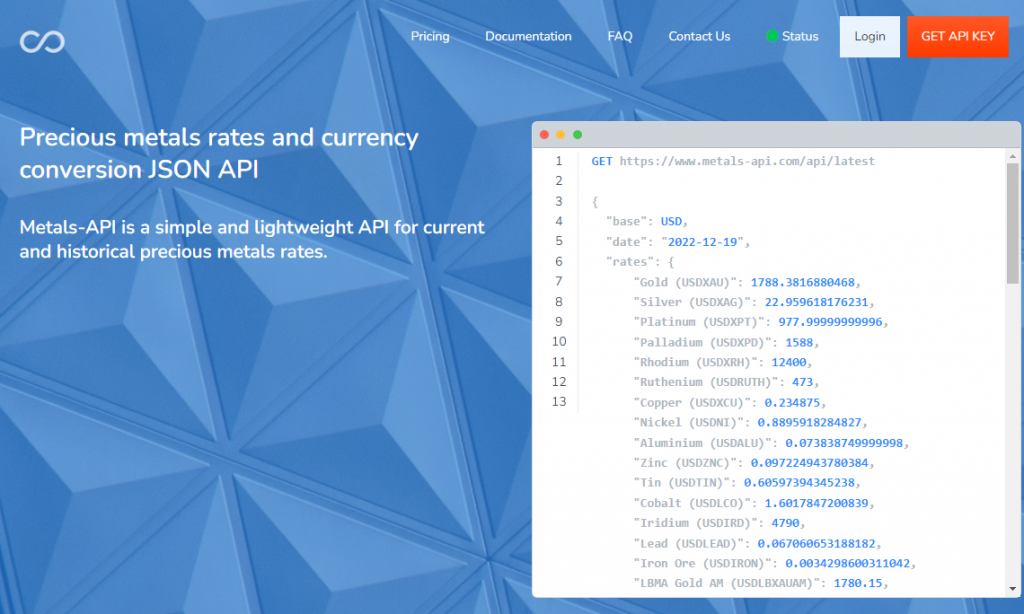Have you ever wanted to use a MetalsAPI with Python? This short guide will give you a walkthrough of which API to use and how!
First of all, what exactly is a MetalsAPI? To make it brief, an API of metals researches and provides data on prices and fluctuation of the values in the metals market. With an API like this you can find out the value of gold and other precious metal types. It’s thanks to the advances of recent technology which sprung the wonder of API, or Application Programming Interface.
An API operates as a way of communication or link between two systems. Thanks to said link, these systems are able to handle and receive data more easily and faster. Overall, APIs help speed up and optimize the transfer of data. APIs are great helps for many developers and as such they are made with the intent to work and integrate in many programming languages.
Amongst the many programming languages available to developers, some stand out as more commonly used. Python, for example, is a popular coding language which normally finds use in creating websites, automating processes and conducting data analysis. More often than not, developers try to integrate a MetalsAPI or similar ones in Python coding to create a faster process of data gathering. But, how can it be accomplished easily?

How Can I Find A MetalsAPI To Use?
While MetalsAPIs are usually available on the web, there are so many that it can be difficult to find one to try. However, a good starting point for anyone is the Metals API; it’s great for either new developers or experienced ones since the system is quite friendly and easy-to-navigate. The service that this API provides is to deliver accurate and reliable data on metal prices and values for better insight into the metal market.
Metals API works on a simple, yet powerful, input-to-output system. Using the service requires you to make a call to the site of the API; this call contains your request for information, and soon after you’ll receive a response that details the data you requested. The process is fast, smooth, and efficient in its delivery.
The site can provide you with information and data like; both latest and historical rates and values, fluctuation perceived on the market, carat and more. You can check all the information you can get from the documentation page on the site.

Step-By Guide On Using A MetalsAPI With Python
So, let’s say that you want to integrate the Metals API with Python and run a process to get data on metal prices. It’s really simple to actually do it since the Metals API offers a quick and smooth way to work with programming languages like Python and others, such as Java.
Follow these steps, and you’ll be able to use the Metals API with Python:
- Signing Up; you’ll first need an account which will give you an Access Key that allows you to get the endpoints of the site. After making your account, you’re good to go.
- Finding the Endpoints; under the API’s documentation page you’ll find all the information you get. Once there, you’ll then need to copy the endpoints of the information you want. Let’s say you want to find out historical rates; you copy the endpoint and then drop it on your code.
- Filling Up; given that most endpoints ask you to fill some parameters in order to work and provide accurate data. Sometimes you’ll need to specify the name, code, or symbol (all supported symbols can be viewed in the documentation page as well)
- Hitting Click; lastly, with the endpoint on the code, all the information filled as well as specifying with which code it works (in this case Python); you just hit “run” and with that you’ll get the information you asked.
As mentioned, each time you run the code, it counts as a call or request to the Metals API. You get 50 requests per month with your account, which you can use however you want. However, you can check out the pricing section and get any of the upgrade plans to receive even more calls each month.
Check out this latest and related post: Best MetalsAPI Pricing API In Java

